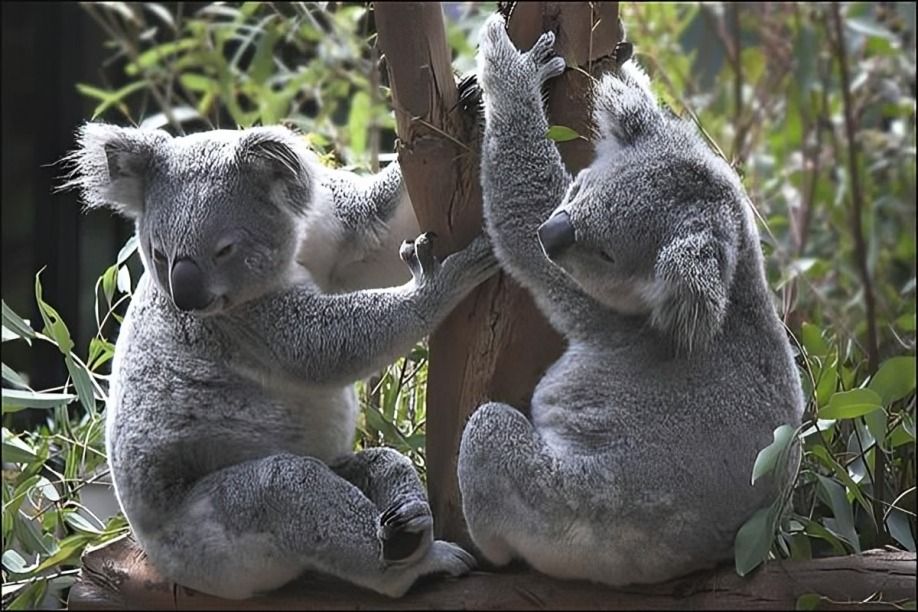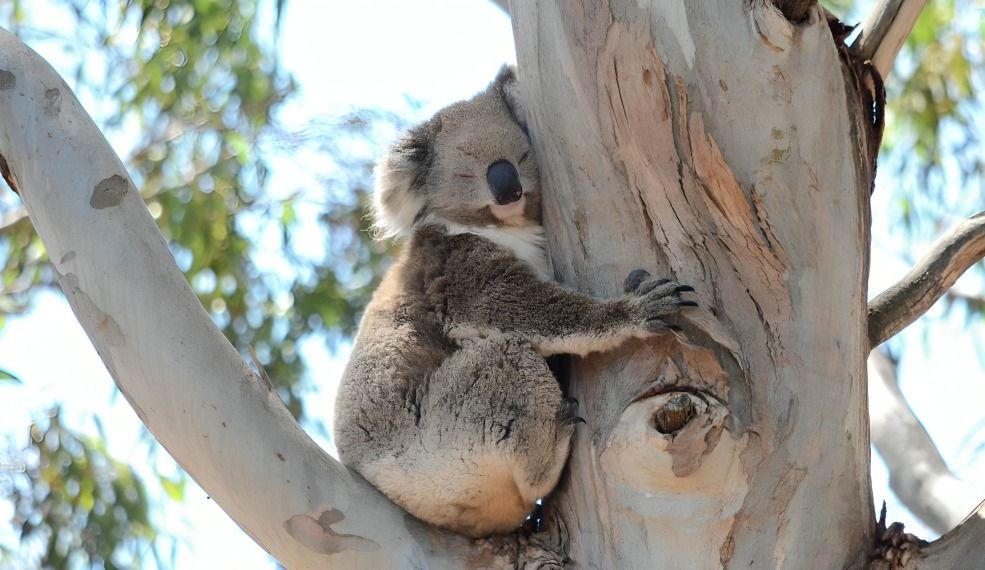
“
In this blog, we'll delve into 20 amazing facts about koalas, shedding light on their adaptations, habits, and the conservation challenges they face. From their iconic diet of eucalyptus leaves to their specialized anatomy and social behaviors, koalas captivate both researchers and wildlife enthusiasts alike. Join us as we explore what makes these gentle creatures truly remarkable.1
1
”
One of the lesser-known facts about koalas is their unique fingerprints, which are remarkably similar to human and primate fingerprints. These fingerprints aid their gripping ability and maneuver through the branches of eucalyptus trees.1
Baby koalas, known as joeys, are born undeveloped after a short gestation period of around 35 days. They immediately crawl into their mother's pouch, where they continue to develop for the next six months.2

Female koalas are typically larger and heavier than males, with broader heads and more robust bodies adapted for motherhood. These physical differences reflect the roles each sex plays in reproduction and the care of their young.
The koala's diet consists mainly of eucalyptus leaves, which they consume in large quantities to meet their nutritional needs. They also occasionally eat leaves from other tree species when available, depending on the region.3

The oldest captive koala is Midori, born in February 1997. As of March 1, 2022, she is at least 25 years old and resides at Awaji Farm Park England Hill in Minamiawaji, Hyogo, Japan.
Koalas generally live between 10 to 12 years, facing challenges such as habitat loss and natural predators like dingoes. However, in captivity, where they receive regular veterinary care and a controlled diet, koalas can live up to 18 years or more.4
The name "koala" comes from the Dharug language, meaning "no drink" or "no water." because they obtain most of their hydration from eucalyptus leaves.5
Maternal care is crucial for the survival of koala joeys. Mothers nurse their young in the pouch for about six months, providing them with milk until they start consuming partially digested eucalyptus leaves.6
Koalas communicate through a variety of vocalizations, including grunts, barks, and bellows. These vocalizations serve different purposes, from signaling distress or aggression to attracting mates during the breeding season.7
The largest koala litter consisted of identical twins, Euca and Lyptus, born on April 10-11, 1999, in Queensland, Australia. They were the first known koala twins and were identified using DNA fingerprinting by Leigh Slater on November 25, 1999.8
Koalas have a specialized diet of eucalyptus leaves, which are toxic to most animals. Their digestive system, equipped with unique liver enzymes and gut bacteria, allows them to safely consume up to a kilogram daily despite the leaves' poisonous nature.9

Koalas can sleep up to 18-20 hours daily, nestled in tree forks. This extensive rest helps them conserve energy due to their low-energy eucalyptus diet. Their sleeping habits are an adaptation to the minimal energy gained from their leaf-based diet.
Though often called "koala bears" due to their bear-like appearance, koalas are not bears. They are marsupials, related more closely to kangaroos and wombats. Their resemblance to bears is coincidental and not indicative of their true classification.10
Koalas are usually gentle, but they can become aggressive if threatened or stressed. Despite their docile nature, they have sharp claws and teeth that can cause injury if they feel endangered.11
Koalas are listed as vulnerable on the IUCN Red List due to habitat loss, fragmentation, and urban development. These factors have significantly reduced their population size and distribution across Australia.12
Large, fluffy ears play a crucial role in helping koalas regulate their body temperature, especially in diverse Australian climates. By adjusting blood flow to their ears, koalas can dissipate excess heat or conserve warmth.13
Koalas rely heavily on their acute sense of smell to locate the most nutritious eucalyptus leaves for feeding. Their large nose and keen olfactory senses help them distinguish between different tree species and identify the leaves. 14
While generally solitary animals, koalas exhibit social behaviors during the breeding season and when raising young joeys. Males establish territories marked by scent glands, where they compete for access to females during mating season.15
Koalas have scent glands on their chests that release a strong-smelling substance. Males use these secretions to mark their territory and communicate with other koalas, playing a key role in establishing dominance and social interactions.16
Koalas are primarily nocturnal and crepuscular, meaning they are most active at night, dawn, and dusk. They spend the majority of their time resting during the day to conserve energy.17


